Ellagitannins from Eucalyptus camaldulensis and their potential use in the food industry
Plants play a key role in the treatment and prevention of diseases since ancient times.
Eucalyptus has been traditionally used in the treatment of conditions related to the respiratory system, such
[...] Read more.
Plants play a key role in the treatment and prevention of diseases since ancient times. Eucalyptus has been traditionally used in the treatment of conditions related to the respiratory system, such as flu, colds, sore throats, bronchitis, as well as neuralgia, and stiffness. Eucalyptus camaldulensis has several phytoconstituents such as ellagitannins endowed with bioactivity, including antioxidant and inhibitory potential on various microorganisms causing foodborne diseases. Tellimagrandin I, pedunculagin, castalagin/vescalagin are among the most representative and have activity against pathogens such as Staphylococcus aureus, Escherichia coli, Listeria monocytogenes, and Bacillus cereus. These antioxidant ellagitannins may have potential application in the food, pharmaceutical, and cosmetic industries. The main industrial uses of E. camaldulensis are related to the production of wood, paper, and charcoal, with its leaves and branches considered by-products from these industrial activities. However, these plant by-products could be used to obtain bioactive compounds for the development of new and improved consumer goods. Therefore, the aim of this work was to review the main ellagitannins of E. camaldulensis and their antioxidant and antibacterial activities in foodborne microorganisms, as well as the relevance that these compounds may have in the food industry and related sectors.
Eliseo Sánchez-Loredo ... Juan A. Ascacio-Valdés
View:2347
Download:51
Times Cited: 0
Plants play a key role in the treatment and prevention of diseases since ancient times. Eucalyptus has been traditionally used in the treatment of conditions related to the respiratory system, such as flu, colds, sore throats, bronchitis, as well as neuralgia, and stiffness. Eucalyptus camaldulensis has several phytoconstituents such as ellagitannins endowed with bioactivity, including antioxidant and inhibitory potential on various microorganisms causing foodborne diseases. Tellimagrandin I, pedunculagin, castalagin/vescalagin are among the most representative and have activity against pathogens such as Staphylococcus aureus, Escherichia coli, Listeria monocytogenes, and Bacillus cereus. These antioxidant ellagitannins may have potential application in the food, pharmaceutical, and cosmetic industries. The main industrial uses of E. camaldulensis are related to the production of wood, paper, and charcoal, with its leaves and branches considered by-products from these industrial activities. However, these plant by-products could be used to obtain bioactive compounds for the development of new and improved consumer goods. Therefore, the aim of this work was to review the main ellagitannins of E. camaldulensis and their antioxidant and antibacterial activities in foodborne microorganisms, as well as the relevance that these compounds may have in the food industry and related sectors.
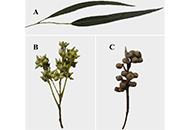 Ellagitannins from Eucalyptus camaldulensis and their potential use in the food industryOpen AccessReviewPlants play a key role in the treatment and prevention of diseases since ancient times. Eucalyptus has been traditionally used in the treatment of conditions related to the respiratory system, such [...] Read more.Eliseo Sánchez-Loredo ... Juan A. Ascacio-ValdésPublished: February 27, 2024 Explor Foods Foodomics. 2024;2:83–100
Ellagitannins from Eucalyptus camaldulensis and their potential use in the food industryOpen AccessReviewPlants play a key role in the treatment and prevention of diseases since ancient times. Eucalyptus has been traditionally used in the treatment of conditions related to the respiratory system, such [...] Read more.Eliseo Sánchez-Loredo ... Juan A. Ascacio-ValdésPublished: February 27, 2024 Explor Foods Foodomics. 2024;2:83–100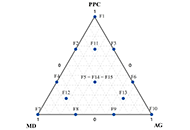 Rice bran oil-in-water optimized emulsions for the development of plant-based foods and beveragesOpen AccessOriginal ArticleAim: This work aimed to develop rice bran oil-in-water (O/W) emulsions, stabilized with different mixtures of pea protein concentrate (PPC), Arabic gum (AG), and maltodextrin (MD), as the basis f [...] Read more.Lucas O. Benitez ... Juan M. CastagniniPublished: February 27, 2024 Explor Foods Foodomics. 2024;2:67–82
Rice bran oil-in-water optimized emulsions for the development of plant-based foods and beveragesOpen AccessOriginal ArticleAim: This work aimed to develop rice bran oil-in-water (O/W) emulsions, stabilized with different mixtures of pea protein concentrate (PPC), Arabic gum (AG), and maltodextrin (MD), as the basis f [...] Read more.Lucas O. Benitez ... Juan M. CastagniniPublished: February 27, 2024 Explor Foods Foodomics. 2024;2:67–82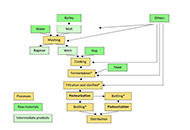 Increasing of craft beer shelf life, with and without alcohol, through immersion batch pasteurizationOpen AccessOriginal ArticleAim: This study delves into the pasteurization process for craft beer, exploring its impact on containers and closures. Focusing on small breweries, it have been assess various treatments and fin [...] Read more.Rut Domínguez ... Manuel DomínguezPublished: February 26, 2024 Explor Foods Foodomics. 2024;2:43–66
Increasing of craft beer shelf life, with and without alcohol, through immersion batch pasteurizationOpen AccessOriginal ArticleAim: This study delves into the pasteurization process for craft beer, exploring its impact on containers and closures. Focusing on small breweries, it have been assess various treatments and fin [...] Read more.Rut Domínguez ... Manuel DomínguezPublished: February 26, 2024 Explor Foods Foodomics. 2024;2:43–66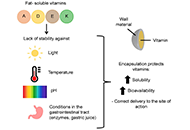 Leguminous fractions as encapsulating agents of fat-soluble vitaminsOpen AccessReviewVitamins are essential micronutrients for the functioning of the human body. Vitamins can be classified as water-soluble and fat-soluble, and are obtained through diet or supplementation. Fat-solubl [...] Read more.Angela Daniela Carboni ... María Cecilia PuppoPublished: February 23, 2024 Explor Foods Foodomics. 2024;2:30–42
Leguminous fractions as encapsulating agents of fat-soluble vitaminsOpen AccessReviewVitamins are essential micronutrients for the functioning of the human body. Vitamins can be classified as water-soluble and fat-soluble, and are obtained through diet or supplementation. Fat-solubl [...] Read more.Angela Daniela Carboni ... María Cecilia PuppoPublished: February 23, 2024 Explor Foods Foodomics. 2024;2:30–42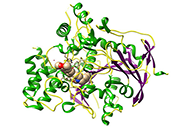 Assessment of the health benefits of phytochemicals in Cynometra cauliflora based on an in silico study against Alzheimer’s diseaseOpen AccessOriginal ArticleAim: Cynometra cauliflora (namnam) belongs to the family Fabaceae and is native to eastern Peninsular Malaysia. It grows well with an annual rainfall of 1,500–2,000 mm. Even though a consider [...] Read more.Jagath Illangasinghe ... Viduranga Yashasvi WaisundaraPublished: January 23, 2024 Explor Foods Foodomics. 2024;2:1–29
Assessment of the health benefits of phytochemicals in Cynometra cauliflora based on an in silico study against Alzheimer’s diseaseOpen AccessOriginal ArticleAim: Cynometra cauliflora (namnam) belongs to the family Fabaceae and is native to eastern Peninsular Malaysia. It grows well with an annual rainfall of 1,500–2,000 mm. Even though a consider [...] Read more.Jagath Illangasinghe ... Viduranga Yashasvi WaisundaraPublished: January 23, 2024 Explor Foods Foodomics. 2024;2:1–29